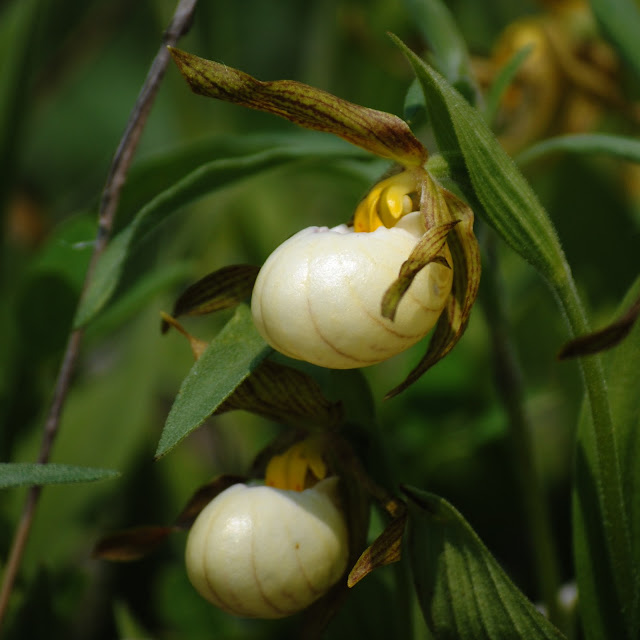A perfect balance of sun and breeze found its way into my room this morning to wake me up. The bright warm rays were the kind that promised a perfect day, and it was. On a normal day, there seems to be less plant diversity. But when the sun finally shows itself, the prairies open up and fill with life. Even so, though, it takes a well-trained eye to pick out the gems within the dense grasses.
Goat's beard (Tragopogon dubius) and red baneberry (Actaea rubra) beginning to fruit. Goat's beard is a common aster that turns its head towards the sun. The flower opens only when the sun is out and closes by mid day.
A brand new violet for me, western Canada violet (Viola canadensis var. rugulosa). This species differs from its Canada violet (Viola canadensis) by having much larger leaves that come to a pinched point. The larger leaves creep below the soil and emerge inches from the plant, which is different than V. canadensis.
Roundleaf serviceberry (Amelanchier sanguina). Serviceberries are known to be challenging to separate, though, this one stuck out to me like a sore thumb. The leaves have a dull serrate look to them and the tips are obtuse, giving the leaf an overall round look.
Bellflower (Campanula rotundifolia) and yellow sundrops (Calylophus serrulatus). In Ohio, the harebell is endangered, though, I was lucky enough to see patches along the Ohio islands when I worked at Middle Bass Island State Park. Yellow sundrops are not found in Ohio.
Green sage or terragon (Artemisia dracunculus) and fringed sage (Artemisia frigida). Sages are an important community in the west but have spred dramatically through overgrazing. The epithet of fringed sage, frigida, refers to it occupying cold regions.
White penstemon (Penstemon albidus) and indian breadroot (Pediomelum esculentum). Penstemons are often a signal of prairie habitat. This species runs right down the center of the prairie belt, thus, does not exist in Ohio. Indian breadroot has a similar distribution with an interesting population in New York. Plains Indians valued this genus above all other wild edibles for the hardy tubers they produced. In late summer, the leaves and stalks fall off and blow away.
An expired marsh marigold (Caltha palustris) and a dwarf leadplant (Amorpha nana). Like Indian breadroot, dwarf leadplant is a legume. Legumes contain a symbiotic relationship with rhizomatic bacteria that fixes nitrogen into a useable food source for plants. Thus, an abundance of legumes are an indicator of rich prairies and lush plant communities.



































